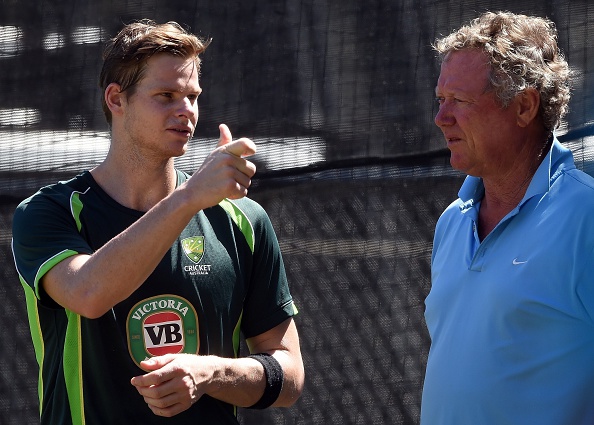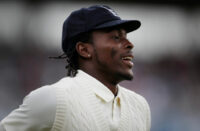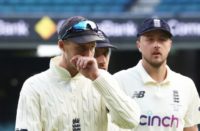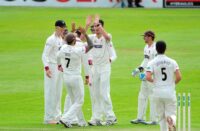For Australia and its beleaguered fans, a ray of sunshine has suddenly emerged from the bleak clouds thickening after a nightmarish start to summer. Goodwill has emanated in the aftermath of a surprisingly convincing victory over South Africa in the third Test in Adelaide. It was a momentary breather from a period of utter turmoil in Australian cricket.
The emergence of batting debutants Matt Renshaw and Peter Handscomb suggested Australia’s renewal may be imminent; particularly if you conveniently overlook South Africa’s sluggishness in Adelaide after two momentous victories and an emotionally draining ball tampering saga.
Still, Australia suddenly has a chance to build momentum against an out-of-form Pakistan side, who haven’t won a Test in Australia for 20 years. It is entirely possible that by early January, after the Australian summer’s Test finale at the Sydney Cricket Ground, Australia will be riding a four-Test winning streak and heralding a successful transition.
However, being the ultimate party pooper, an important question needs to be asked: Is this fool’s gold? It seems slightly simplistic to believe merely wielding the axe and discarding a few creaky batsmen was all that was required to resurrect Australia’s forlorn performances.
Once the home stretch concludes, a daunting tour of India looms, where there is every likelihood Australia will suffer another whitewash in a country filled with haunting apparitions for them. If that does indeed ensue, fingers again will be pointed followed by blank stares from those looking for answers. To scratch the surface a little deeper, perhaps we need to look beyond the national team and probe the mishmash of a domestic set-up.
In the aftermath of Australia’s debacle in Hobart, which triggered the resignation of chief selector Rod Marsh and a recalibration of selection mantra, I spoke to former Australian captain Kim Hughes, which seemed apt considering the dire circumstances unfolding.
Before an emotional Steve Smith was forced to fend off the inquisitorial journalists with passionate ripostes in the aftermath of Hobart, Hughes had been the last Australian skipper so publicly shamed on home soil.
In late 1984, Australia had humiliatingly lost five consecutive Tests against the might of the West Indies, prompting a tearful Hughes to resign as captain after conjuring just four wins from 28 matches in charge.
A clearly infuriated Hughes told me that he believed at the core of Australia’s problems was a lack of preparation ahead of the series against South Africa. Before the first Test in Perth, there was just one Sheffield Shield round and those matches were played under lights with the first two weeks of the Australian cricket season dominated by the Matador Cup.
The Big Bash League’s (BBL) increasing popularity has consigned the 50-over tournament to the start of the season, played in a frenetic two-week format in a sure sign of its dwindling mainstream appeal.
The 62-year-old said Australia’s woes could be attributed to the Shield being “demeaned”. He told The Cricket Paper: “There just has to be two-to-three Sheffield Shield matches in October before the Test summer starts.
“Whoever signed off on there being just one four-day round, which was day-night games, needs to go. The Shield has always been the backbone of Aussie cricket, but it has been belittled.
“The schedule has been stuffed up and we’ve given ourselves no chance at all (against South Africa). If we don’t have a proper Sheffield Shield then we can’t produce good Test players. The Matador Cup can be moved somewhere else.”
Hughes said he gave the outgoing Marsh, his former teammate, words of encouragement in the aftermath of the shock resignation, and believed the selectors faced an uphill task trying to pick the best XI.
“Rod (Marsh) has been an unbelievable servant of Aussie cricket and I texted him straight after (the resignation),” he said. “I feel sorry for them (the selectors). They didn’t have the performances to gauge because there was just one Shield match. It has been an absolute diabolical mess up.”
Hughes said English county cricket had long been a source of mockery for smug Australians but, right now, the Shield had lost its way. “Everyone used to laugh at county cricket, but right now our domestic programme is a tragedy,” he said. “The Shield has always been the cornerstone of Australian cricket, and if it gets stuffed around then problems are likely to arise with the national team.”
As Hughes points out, the Shield has essentially become a science lab for Cricket Australia to test its gimmickry. In a prime example, this season, three types of balls will be used: the Kookaburra pink to prepare players for day-night Tests; the traditional red, and the English Dukes ball, which will be used after Christmas in a bid to help players prepare better for an Ashes tour that isn’t scheduled until 2019.
The first round of the Shield was bizarrely played with the pink ball under lights, and essentially served as a trial for national selection. Australian Test pace bowlers had restrictions on the number of overs they could bowl fuelling the rising belief that the Shield is losing sanctity.
Due to the rise of the BBL, which occupies the peak of the Australian summer from December to January, the Shield season is a jumble with half of the season held before the Twenty20 tournament and the remaining matches resuming in February. With scatterbrain fixturing, it is little wonder Australia has played such schizophrenic cricket and batsmen – particularly in Hobart – were being dismissed by bewildering strokes. Perhaps we shouldn’t be surprised by all of this considering the hodgepodge of formats being tossed around so hastily.
Undoubtedly, the Shield season has become badly disrupted by the BBL, although few probably care; the big wigs of Australian Cricket are milking their cash cow, while many Australian cricket fans – particularly newcomers – are increasingly gravitating towards the sleeker Big Bash.
All of this means it is unlikely Cricket Australia will tread cautiously to preserve the quaint Shield which, unfortunately, is neglected to the background these days. Thus, Hughes’ damning critique could well prove to be an ominous foreshadowing of what is ahead for the Australian Test team despite their Adelaide renaissance.
This piece originally featured in The Cricket Paper, December 9 2016
Subscribe to the digital edition of The Cricket Paper here












